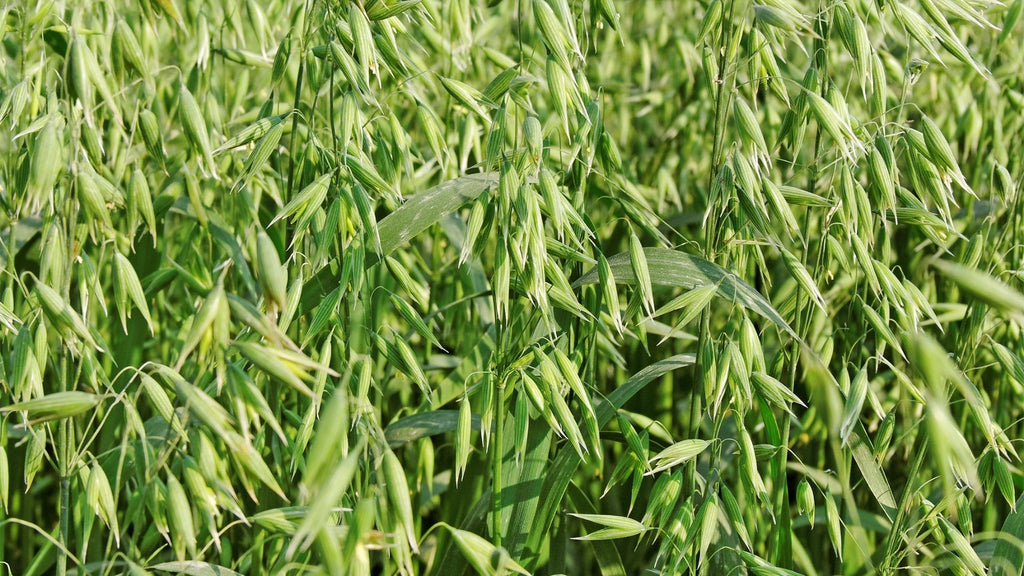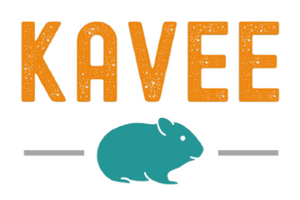Saying that guinea pigs love hay would be an understatement, as a large part of their lives revolves around it! Hay makes up over 80% of a guinea pig's daily diet and is essential for their digestion, dental health, and mental stimulation. Not only do guinea pigs love eating hay, they also like to play in it and sleep on it. Without it, piggies wouldn’t be able to lead a healthy and happy life, as it makes up the majority of their diet and it’s essential to their wellbeing.
But did you know that not all hay is the same? Below, we break down the different types to help you find the best hay for guinea pigs. Read on to learn more!
 Why do guinea pigs need hay?
Why do guinea pigs need hay?
Hay is a key component of a guinea pig’s health and wellbeing, and should make up 85 to 90% of their diet. Here are 3 main reasons why:
Hay is essential for guinea pig teeth
Since guinea pigs' teeth are constantly growing, it's important to stop them from becoming overgrown. Constantly chewing hay will wear their teeth down, keeping them at a healthy length!
Hay is essential for guinea pig digestion
Hay provides the essential high fibre diet that piggies need to keep their gut moving. If their gut slows down, which could happen due to absent or limited hay, it could lead to fatal problems like bloat and gut stasis. That’s why it's important to provide a balanced diet and closely monitor their appetite. If you suspect your guinea pig has stopped eating, it's always best to seek veterinary advice.
Hay is essential for guinea pig enrichment
In the wild, guinea pigs naturally burrow and tunnel in long grasses, so hay allows you to recreate this environment for domestic piggies. Any extra hay that's not eaten can be used to play and even as bedding (just make sure that the hay you hand out to eat is fresh and not soiled!).
Here's a playtime idea: fill a container like a litter tray for guinea pigs with hay, and hide some treats under the hay. Foraging fun guaranteed!

How much hay should I feed my guinea pig?
Guinea pigs should be provided with unlimited hay at all times. For them, hay makes up the bulk of their diet and should never be viewed as a treat. In fact, Good quality hay makes up 80 to 90% of a guinea pig's diet alongside fresh water, pellets, and a variety of fresh fruit and vegetables.
The quality of hay for guinea pigs
With a piggy's diet being made up of mainly hay, it's important to invest in high-quality hay. The best hay for guinea pigs is green in colour (with the exception of meadow hay, which is golden), smells fresh, and is dry with no brittle or dust. Dusty hay can cause allergies for both you and your guinea pig. Hay that's yellow or brown no longer has a high nutritional value.
You should also check your hay for any foreign objects, such as unsafe plants or plastic. Even the highest quality hay can sometimes get things mixed into it when harvested from the field. The quality of hay is also important because a poorer quality can harbour pests such as mites. The same could happen if you don't store your hay properly - always keep hay in a dry, dark, and well-ventilated place to maintain its quality.

What is the best hay for guinea pigs?
When it comes to hay, there are plenty of types to choose from that are safe for your guinea pigs to eat. While they're generally all high in fibre, not all hay is equal when it comes to nutrition.
You may already know that guinea pigs are prone to urinary tract infections if they follow a high-calcium diet. Calcium can also be found in high concentrations in hay. So it's important that you select hay that's relatively low in calcium, and leave calcium-rich hay as an occasional treat.
Here are the 10 types of hay most commonly fed to guinea pigs:
Timothy Hay
Timothy Hay is the most common and well-known hay used for guinea pigs. Timothy Hay is a high-quality green hay with a high nutritional value for guinea pigs, so a great choice for daily feeding. You can get several types of timothy – first, second, or third cut.
The first cut contains more seed heads and has less nutritional value and fibre than the 2nd cut, which is softer and greener. The third cut is the last harvest of the year and has the sweet green leaves harvested later in the season.

Orchard Grass
Orchard grass is high in fibre, green to greenish-gold in colour, and can be mixed in with timothy hay to give your guinea pigs some variety. It's very similar to second-cut timothy hay, but it's just a bit leafier and a great choice for people with allergies than other types of hay.
Orchard grass contains the lowest level of calcium compared to other hays, making it perfect for long-term feeding. Due to its softer nature, it's also a great option for bedding as it carries a low risk of hay poke.
 Meadow Hay
Meadow Hay
Meadow hay is made from long grass, seeds, and flowers from a meadow. Meadow hay is great to encourage foraging behaviour in guinea pigs, but can contain more calcium than other hays, as well as other plants that guinea pigs may not like.
As such, it's a tasty option to feed as a treat or to mix with other types of hay, but best to be avoided for daily feeding.
 Alfalfa Hay
Alfalfa Hay
Alfalfa hay is high in calcium and so it should only be fed as an occasional treat in adult guinea pigs, as it can cause bladder sludge and possible bladder stones. However, this hay is beneficial for pregnant or nursing sows as the extra calcium and protein are passed onto the pups.
Alfalfa hay is also great for piggies that are less than 6 months old to support their growing teeth and bones, and very young or elderly piggies who need to put on weight or are recovering from illness.
 Oat Hay
Oat Hay
Oat Hay is also known as wheat hay, it's golden/yellow in colour and thicker than other hay, with coarser stems (so not a great choice for bedding!). Oat hay is great to add variety or feed as a treat alongside your regular hay, as it's known to be higher in protein and fat.
 Ryegrass
Ryegrass
Ryegrass is considered one of the most balanced hays for calcium and phosphorus but is high in protein and sugar. So handing out this type of hay requires moderation, making this either an occasional treat or something to be mixed with other hay to encourage foraging.
 Bermuda grass
Bermuda grass
Bermuda grass is another great choice as a daily feeding hay due to being low in calcium and phosphorus values, with a nutritional value often compared to timothy hay. However, this type of hay may be trickier to find depending on where you live, as it's usually grown in tropical regions.
 Can guinea pigs live on just hay?
Can guinea pigs live on just hay?
No, while hay makes up the majority of their meals, guinea pigs also need plenty of fresh greens, vegetables, and pellets for a balanced diet.
What happens if you don't give a guinea pig hay?
If you don’t feed hay to your guinea pig, they won’t be able to maintain good digestion and eat enough fibre to be healthy. As much as we may find cleaning up poos annoying, a guinea pig that keeps pooping all day long shows that their digestive system is working well!
Their teeth would also struggle to avoid overgrowth as they won’t get enough fibre-rich food to munch on throughout their day.
What do you do if your guinea pig has hay poke?
Hay poke is when a small piece of hay gets stuck in guinea pigs’ eyes, causing them to water and appear cloudy. If the hay hasn’t gone far enough into the eye, you can try to remove it with silicone tweezers. Or try to apply guinea pig-safe eye drops to flush it out. If all fails or the hay looks too stuck to come out easily, always consult your vet for help.
Hay should never be left in the eyes, as it could eventually lead to serious health problems and even cause a guinea pig to go blind. While it’s impossible to completely prevent hay poke, choosing fleece bedding can reduce some of the chances.
Can guinea pigs get mites from hay?
No, while guinea pigs can catch mites, they’re unlikely to get them directly from hay. Mites feed on skin, so they’re more likely to be transmitted between different guinea pigs or infected bedding than hay itself.
Where should I store my guinea pigs’ hay?
Hay should be stored in a cool, clean, and dry place to prevent it from getting damp or retaining moisture. Damp or wet hay can result in mold, which is harmful to your guinea pigs' health. Hay should also be stored away from windows and as it can lose its nutritional value if left to bleach in the sun.
Try a handy hay bag to keep their feeding hay fresh and easily within reach, without gathering dust on the guinea pig cage's floor.
Conclusion
High-quality fresh hay plays a vital part in your guinea pig's diet, health, and wellbeing. While there are plenty of different types of hay to choose from, not all of them are best suited for daily feeding or bedding. However, we recommend you invest in a hay bag to store your hay away from dust and dirt, and choose fleece cage liners for guinea pigs to reduce the chances of hay poke.
Now that you know which type to pick out of the many, treat your piggy to the best type of hay around for guaranteed popcorns!
Frequently Asked Questions
What other piggy parents are reading









